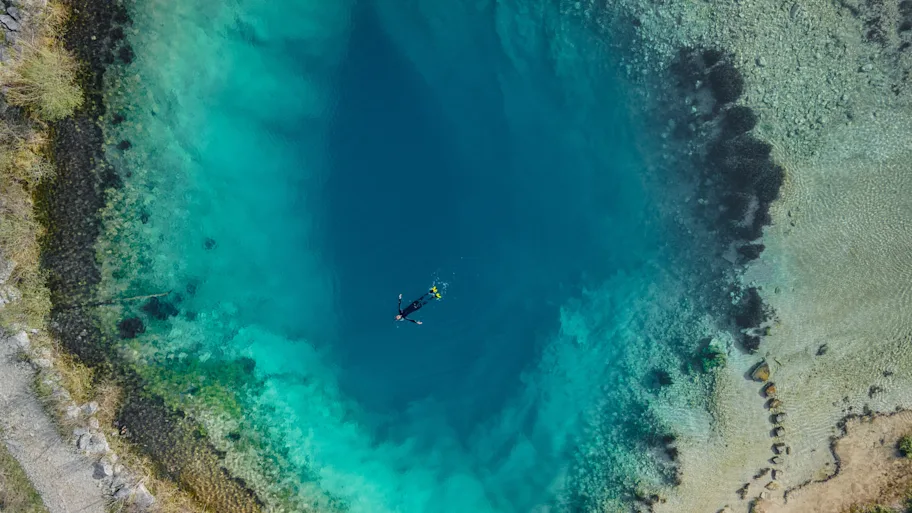
- Science News
- Psychology
- How many days has it been since your last fit of laughter? Here are five Frontiers articles you won’t want to miss
How many days has it been since your last fit of laughter? Here are five Frontiers articles you won’t want to miss

At Frontiers, we bring some of the world’s best research to a global audience. But with tens of thousands of articles published each year, it’s impossible to cover all of them. Here are just five amazing papers you may have missed.
Scientists find we have a fit of laughter every four days
Laughter is such a universal part of our lives that it can be surprising how little scientists know about laughter types, frequency in everyday life, and its association with personality types, happiness, and life satisfaction.
In a recent Frontiers in Psychology article, researchers used smartphones and wearable sensors to monitor and analyze participants’ everyday laugher over four weeks.
They found that participants had an average of 2.5 belly laughs per day and that belly laughter progressed to a fit of laughter approximately once every four days. They also found that participants were more likely to laugh during the evening when more social interactions happen, that women laughed slightly more than men, and that younger participants laughed more than older ones. Personality also influenced people’s laughter, for example, people who had higher fear of being laughed at, laughed less often. Measuring laughter the way they have, the researchers said that innovative assessment methods and longitudinal design could advance our understanding of laughter.
Article link: https://www.frontiersin.org/journals/psychology/articles/10.3389/fpsyg.2024.1296955/full
Taking off-days more likely to improve health than cutting out certain foods completely
Globally, people consume a lot of so-called ‘junk’ foods and drinks, which are high in energy but contain few nutrients needed for good health. These foods usually contain saturated fats, added sugars, salt, or alcohol.
Now, researchers have analyzed the results of more than 40,000 adults in Australia who completed a survey about their discretionary food and drink intake. They published their findings in Frontiers in Public Health.
The researchers found that alcohol, cakes, and cookies were the categories where most people exceeded nutritional guidelines. They also found that almost half of the participants were willing to cut back on the foods and drinks they consume the most, compared to foods they don’t consume as much. The willingness to cut back on alcohol, however, was low compared to food groups like takeaway foods and savory pastries. The researchers concluded that a strategy to lower discretionary food and drink intake could be encouraging off-days rather than trying to convince people to stop consuming certain foods altogether.
Article link: https://www.frontiersin.org/journals/public-health/articles/10.3389/fpubh.2024.1385173/full
Fin whale songs found to be more complex than previously thought
The songs of fin whales, recorded across the world’s oceans, have been studied for decades. Fin whales’ songs are known to be complex, varying not only between note types, but also by region.
Now, writing in Frontiers in Marine Science, researchers used more than 100 tracks of fin whale songs dating from 2013 to 2023 to define song patterns of fin whales in the North Atlantic and to learn if patterns have changed over time.
Analyzing almost 300 hours of data showed that fin whales sang in four different patterns, made up of low frequency A and B notes as well as frequency upsweeps prior to B notes. Some of the patterns the researchers found had not been described before, making fin whale song patterns more complex than previously thought. While the dominant song patterns remained relatively stable over the observation period, the researchers also found that some song patterns changed over time. For example, upsweep peak frequency decreased, continuing a trend that has been observed over the past 30 years.
Article link: https://www.frontiersin.org/articles/10.3389/fmars.2024.1278068/full
Walking on uneven surfaces leads to higher brain activation
Walking on surfaces that are uneven or, for example, slippery demands more from our brains: Our movements need to be planned ahead and walking requires more attention. The resulting mechanisms in the brain, however, are not well understood.
To change this, researchers measured brain activation while younger and older participants walked on one of four levels (flat, low, medium, high) of unevenness on a treadmill. The results were published in Frontiers in Aging Neuroscience.
In all age groups, activation of the prefrontal cortex – a brain region involved in working memory and risk processing among other things – was increased on more uneven terrains, the results indicated. Activation gradually increased with escalating terrain unevenness similarly for younger and older participants. The researchers also observed heightened prefrontal cortical activation in older adults with better mobility function compared with younger adults in all terrains as they walk on uneven surfaces.
Article link:https://www.frontiersin.org/articles/10.3389/fnagi.2024.1389488/full
Climate models need to show regional climate change, scientists say
Climate change is a global issue, but weather extremes are mostly experienced regionally. On a smaller scale, trends take longer to emerge, but regional extremes, such as heat, flooding, and sea surface temperatures have started emerged across the planet.
Recently, an international team of researchers highlighted the necessity of addressing the discrepancies between global and regional climate models to better predict what the future could look like.
Writing in Frontiers in Climate, they stressed that now is a critical time for regional climate change research. Identifying discrepancies between global and regional climate change is essential to enable more effective communication about the underlying drivers of change, provide reliable information to stakeholders, enable societies to adapt, and increase resilience and decrease vulnerability. In certain regions, notably the Global South, this challenge is even greater because a lack of observational data over long periods of time. Accordingly, climate scientists in these regions should be provided with more opportunities to take the lead in regional climate research.
Article link: https://www.frontiersin.org/articles/10.3389/fclim.2024.1391634/full
REPUBLISHING GUIDELINES: Open access and sharing research is part of Frontiers’ mission. Unless otherwise noted, you can republish articles posted in the Frontiers news site — as long as you include a link back to the original research. Selling the articles is not allowed.







